|
||
      |
Features ::
Big Science
In Chicago’s newest research facility, labs—and disciplines—open up
 Four weeks after the April 26 ribbon-cutting that formally opened the
$200 million Ellen and Melvin Gordon Center for Integrative Science, researchers
in plant geneticist Daphne Preuss’s lab—occupied since January—hunkered
over a computer screen and kept an eye on the pH indicator turning yellow
in a culture flask. A grad student waited for a PCR machine, which duplicates
DNA outside the cell, to finish its cycle. “In the old days, you’d
see sinks at the end of every lab bench,” mused Julie Feder, PhD’84,
executive administrator of the Institute for Biophysical Dynamics. “Today
it’s PCR machines, one per bench.” Down the hall, one of molecular
biologist Harinder Singh’s researchers leaned into a chemical hood
to transfer cells to a fresh culture. In the fourth-floor lounge, two PhD
students sat down to microwaved lunches, notebooks beside them on the table.
Four weeks after the April 26 ribbon-cutting that formally opened the
$200 million Ellen and Melvin Gordon Center for Integrative Science, researchers
in plant geneticist Daphne Preuss’s lab—occupied since January—hunkered
over a computer screen and kept an eye on the pH indicator turning yellow
in a culture flask. A grad student waited for a PCR machine, which duplicates
DNA outside the cell, to finish its cycle. “In the old days, you’d
see sinks at the end of every lab bench,” mused Julie Feder, PhD’84,
executive administrator of the Institute for Biophysical Dynamics. “Today
it’s PCR machines, one per bench.” Down the hall, one of molecular
biologist Harinder Singh’s researchers leaned into a chemical hood
to transfer cells to a fresh culture. In the fourth-floor lounge, two PhD
students sat down to microwaved lunches, notebooks beside them on the table.
The glass bowl in the lobby, meanwhile, had just run out of Tootsie Rolls. Stocked at the request of the Gordons—$25 million building donors and Tootsie Roll International chiefs (she’s president; he’s board chair)—the bowl has become a popular destination. “People eat like they’re depending on those Tootsie Rolls for lunch,” joked security guard Fred Norris. “Me too.”
By this fall, the 400,000-square-foot building—outsizing everything on campus except Regenstein Library—will hum with 100 senior scientists and 700 students, assistants, and staffers. Tucked into open, expansive, modular labs, researchers can walk from one to another without opening a door. Their work will similarly converge, tackling nanoscale projects that unite biology, chemistry, and physics. Facilitating that research are high-tech instruments and equipment, as well as underground labs for light- and vibration-sensitive experiments. With a broader footprint than the one above ground, a two-story basement—for which workers excavated 11,000 truckloads of dirt—accounts for 40 percent of the Gordon Center. Said Feder, “It’s like a whole extra building down there.”
The facility gathers together the biological- and physical-sciences divisions, the biochemistry & molecular biology and chemistry departments, the Howard Hughes Medical Institute, the Ben May Cancer Research Institute, and the James Franck Institute—very big science, indeed.
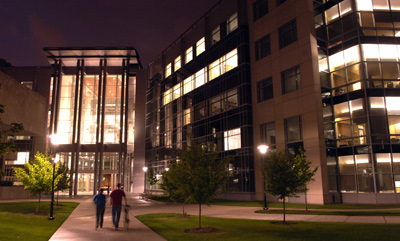
The Gordon Center may be dense with biochemistry, physics,
genetics, and molecular biology, but its exterior is all light and glass.
A soaring atrium hinges the east and west wings.
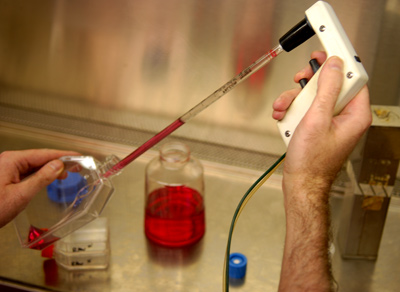
Researchers began claiming quarters in the Gordon Center
in June 2005; by this past spring’s dedication, it was 70 percent
full. In molecular biologist Harinder Singh’s lab, research associate
Peter Laslo cultures cells.
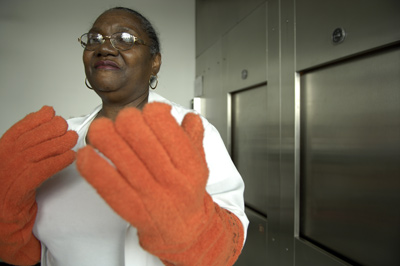
Mondays
are always busy for lab assistant Annie Washington, who mans the massive
autoclaves that sterilize lab glassware in one of the building’s three dishwashing facilities. “The scientists
are here all weekend,” she says, “getting things dirty.”
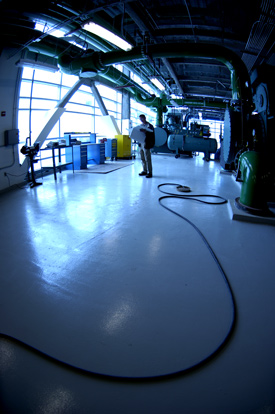
A $31 million ventilation system keeps the air climate-controlled
and chemical-free. The chiller room, checked daily by building manager
Gerald Pinka, serves the entire facility, operating at 62.7 million Btus.
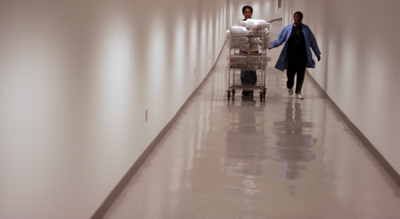
“Lots of people use this—I get complaints when
it’s locked,” Pinka says of the underground corridor linking
the Gordon Center to Crerar Library. Tunnels and skyways will soon connect
nearly all science and medical buildings.
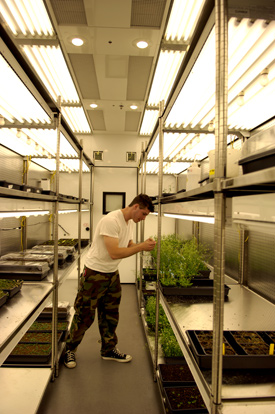
Besides a $600,000 scanning electron microscope and a $270,000
electron paramagnetic resonance instrument, the building offers walk-in,
environment-controlled plant chambers. In geneticist Daphne Preuss’s
lab, PhD student Andrew Cal checks a flat of mustard plants.
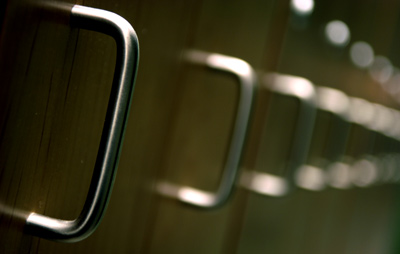
Outside the labs’ wide open spaces, lockers give students,
post-docs, and technicians a place to stash their belongings.
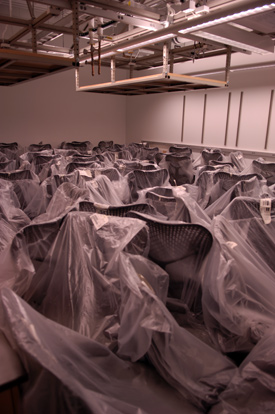
: Until the building’s 400,000 square feet are fully
occupied this fall, vast seas of unwrapped chairs, unassembled lab tables,
and boxed equipment congregate in vacant rooms.
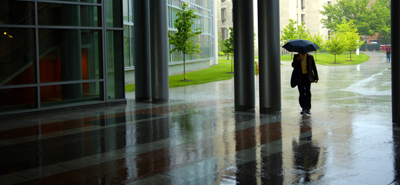
As scientists like geneticist Bruce Lahn
(striding to work) become more interdisciplinary, “it’s very
important that they not be down the street from one another,” physical-sciences dean
Robert Fefferman told the Chicago Maroon in April.